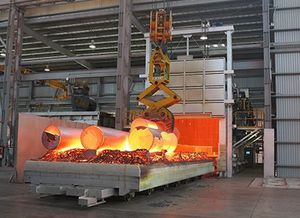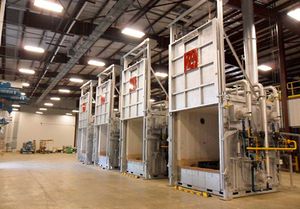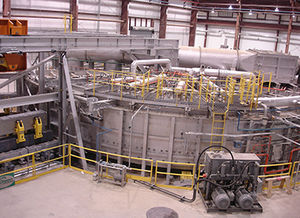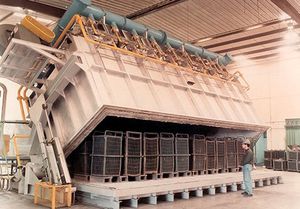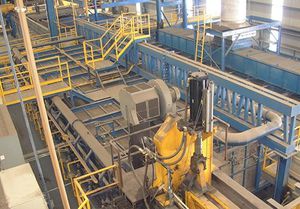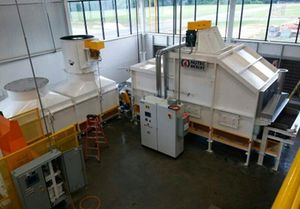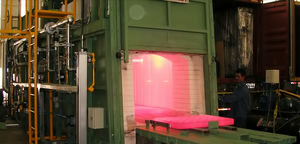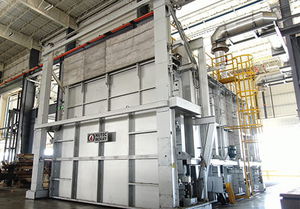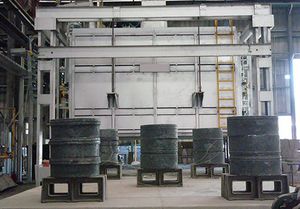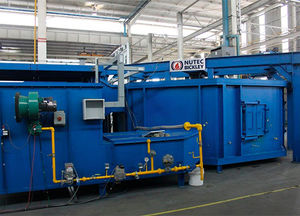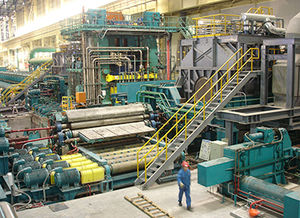

- Company
- Products
- Catalogs
- News & Trends
- Exhibitions
Roller furnace continuous
Add to favorites
Compare this product
Characteristics
- Configuration
- roller
- Other characteristics
- continuous
- Maximum temperature
Min.: 0 °C
(32 °F)Max.: 927 °C
(1,701 °F)
Description
Roller Hearth Furnaces are a very versatile, efficient configuration, mostly used for index moving of work load baskets.
They can also be set up in an oscillating configuration for long heating cycles on very long stock such as pipe, tubing, strip, and slabs. The roller hearth can also handle heavy loads in high volumes because the rolls enable smooth movement of individual carriers, unlike pusher furnaces which rely on forcing a long line of base trays against each other to achieve movement of the product.
This style of furnace can be continuous or indexing on a fixed interval or can operated via forward/reverse oscillation-in-place to accomplish a particular time-temperature cycle.
If sufficient floor space is available, a roller hearth furnace can accomplish a multi-step process such as stress relief including heat, soak and cool steps, moving the product in a continuous manner.
By using an indexing system the footprint can be much smaller because the hearth advances one basket at a time through the steps.
In the oscillate-in-place type, a long load is moved into the furnace chamber, its doors closed, then the system oscillates to keep the rollers from sagging and when the time-temperature cycle has been completed, the load is quickly powered out of the furnace chamber.
Roller hearth furnaces can accomplish a multi-step process such as stress relief including heat, soak and cool steps, moving the product in a continuous manner.
Catalogs
No catalogs are available for this product.
See all of Nutec Bickley‘s catalogsRelated Searches
- Furnace
- Chamber furnace
- Electric furnace
- Heat treatment furnace
- Drying system
- Drying furnace
- Combustion furnace
- Gas furnace
- Tunnel furnace
- Baking oven
- Industrial furnace
- Automatic furnace
- Air blast drying system
- Continuous furnace
- Annealing furnace
- Thermal furnace
- Horizontal furnace
- Quenching furnace
- Hot air drying system
- Vertical furnace
*Prices are pre-tax. They exclude delivery charges and customs duties and do not include additional charges for installation or activation options. Prices are indicative only and may vary by country, with changes to the cost of raw materials and exchange rates.

